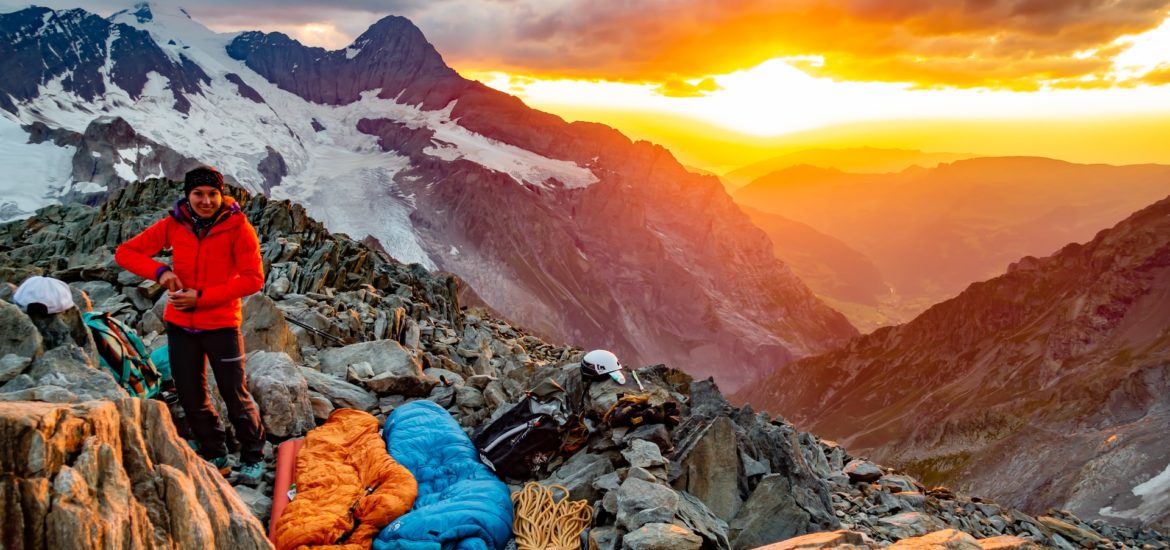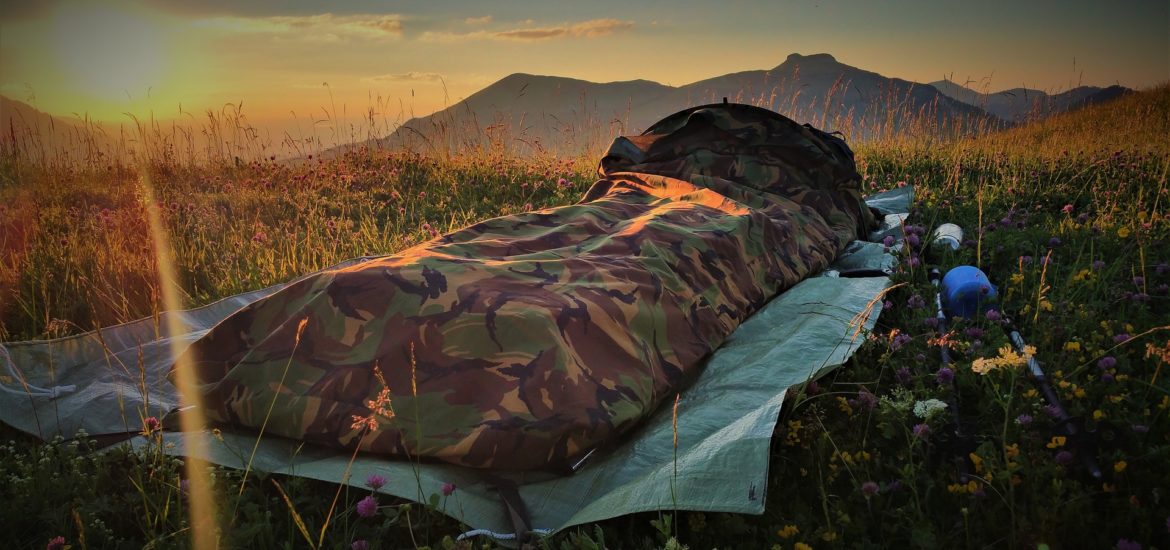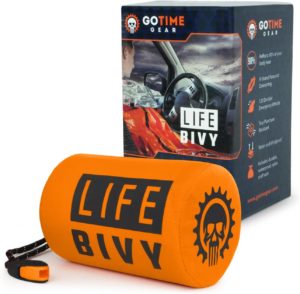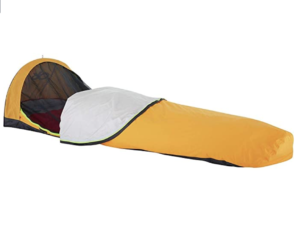Chances are you’ve heard about “bivouacking” and a “bivy sack” but don’t really know what it’s all about. Well, truthfully, I never knew what bivouacking or a bivy bag was either until recently.
Actually, the first time I heard about a bivy sack was when I was watching a mountaineering documentary about summiting Annapurna. But, you don’t need to be climbing one of the deadliest peaks in the world to use one!
So, I’m here to explain everything there is to know about bivouacking and bivy sacks!

What is Bivouacking?
To bivouac is to stay in a temporary camp or shelter. Typically, these temporary camps and shelters aren’t covered which exposes an individual to the elements – rain, sun, snow and wind.
Bivouacking, the verb of bivouac, is commonly known as the act of sleeping outside without a tent.
In some cases, bivouacking just means hunkering down in your clothes and weathering the night – “to shelter in place”.
In other circumstances it means packing just a sleeping bag, mat, and “bivy bag” and trying to keep warm overnight while attempting a summit push in the Himalayas.
But, bivouacking isn’t only relegated to mountaineering and extreme conditions. Some backpackers and hikers attempting to ultralight camp prefer to bivouac in-lieu of packing a tent – less gear, less weight, less energy expenditure.
When to Use a Bivy Sack?
A bivy sack is an impermeable layer or liner that is meant to provide protection from the outside elements. A bivy bag fully encloses around your body to keep in warmth and keep out wind and water.
They are typically used when light-weight travel and sheltering is required. A lot of mountaineers carry an emergency bivy sack in their pack just in case they need to shelter in a precarious spot if the weather gets nasty.
Likewise, light-weight bike-packers, adventure racers, and trail-runners might use a bivy sack instead of carry a tent.
And, unlike a tent, a bivy bag takes up no more space on the ground than your body. Essentially, wherever your body can laydown and rest, a bivy sack can also work.
Most are super quick to deploy and simple to set up, saving you precious time, energy and resources to use for other activities.
And, in the winter, a bivy bag can improve the cold weather rating of your sleeping bag by up to 5oC, which can help you sleep more comfortably in frigid conditions.
How to Setup a Bivy Sack?
Since a bivy sack is just a large bag you climb into, all you need to do is unpack the bag and climb in, with or without a sleeping bag.
A bivy sack is meant to cover your entire body, including your head. You’re essentially fully encapsulated and cocooned inside. It can seem a bit claustrophobic at first, but you’re still fairly free to move around and be comfortable.
Basic Bivy Sack Setup
Deploying a bivy sack is quick and easy:
- Unravel the bivy sack on the ground
- Slide in head area poles (to keep fabric away from face)
- Unzip the side of the sack and place sleeping bag inside
- Climb into bivy sack (and sleeping bag), zip up completely
To elevate your bivouacking experience, it’s recommended to pair a bivy bag with a sleeping pad (and sleeping bag if it’s cold).
Moisture Buildup in Bivy Sack
The biggest issue with bivy sacks is how to manage moisture while inside. Some bivy sacks are made from “breathable” fabric.
However, without proper ventilation you might end up moist and wet overnight. In frigid conditions this can be especially dangerous and lead to hypothermia.
The better manage moisture build up, some bivy sacks have built-in vent ports that allow saturated air to vent to the outside.
Other bivy sacks just require you to leave a portion of the zipper around your head open for fresh air to enter.
If you don’t need to maintain body heat, some bivy sacks have a mesh portion around the head. This allows you to sleep more open to the outside, but protected from insects.
Bivy Sacks for Camping

The best bivy sacks on the market have a few key aspects, as well as a few nice-to-haves which include:
- Waterproof and breathable top fabric
- Waterproof and durable bottom fabric
- Elevated hood around head
- Bug mesh
- Light-weight
Now, bivy sacks don’t come cheap. Since they are made from high quality materials such as Gore-Tex and Rip-Stop nylon, they can start to become rather expensive.
To put it into perspective, imagine the cost of a high-quality rain jacket… for your entire body!
Emergency Bivy Sack
With that in mind, there are a few less expensive “emergency bivy” options that can be used and deployed infrequently. These emergency bivy sacks are not for recreational use, but can be left in a pack or a vehicle for emergency situations only.

Emergency Bivy by Go Time Gear
This emergency bivy is a great low-cost option for added security while camping in remote areas when/if the unexpected occurs.
- $20 to $25
- 7 feet long x 3 feet wide unfolded
- 1 oz. weight
- Stuff sack includes whistle and paracord tinder
Recreational Bivy Sacks
In contrast to an emergency bivy, a recreational bivy sack is geared towards more frequent use. Therefore, they are built to be more robust to handle greater wear and weather exposure.
I would recommend going into an outdoor store and physically using a bivy sack with a sleeping bag and sleeping pad. Find one that fits your body and comfort level.
Here are a couple good quality bivy sacks you can purchase from Amazon.

Interstellar Ascentshell Bivy by Outdoor Research
This is a top-tier bivy sack built to last in any condition. It also includes a head pole and bug net for added comfort and flexibility.
- $200 to $240
- 8 feet long x 2.2 feet wide (at shoulders) x 1.4 feet high (at head)
- Single pole for extra head height
- 21 oz. weight

Woodland Camo Gortex Bivy by Tennier
This military-grade bivy sack is great for minimalists looking for a robust solution for sheltering.
- $200 to $220
- 7 feet long x 2.9 feet wide (at shoulders)
- 28 oz. weight
This article contains affiliate links, which help support this blog at no cost to you!
